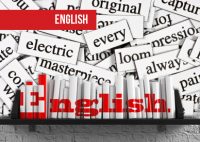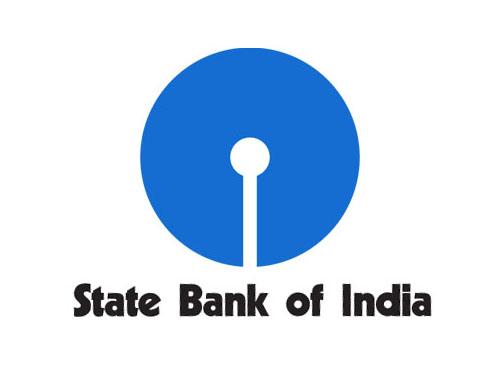Comprehension For SBI PO Set – 41

Comprehension For SBI PO Set – 41
We have witnessed several disasters in recent times—some natural, others man-made. The frequency of such calamities has inured us and deadened our collectively sensitivity, but that does not reduce the enormity of the personal tragedy of each victim’s family and community. The economic loss is only secondary to the human suffering, but is also substantial.
The Government, whether State or Central, has standardized its response. This consists of reacting late, blaming others, visits by VIPs announcing a relief package including compensation for those affected, and then forgetting all about it. There seems to be little attempt at drawing lessons from each disaster, storing the knowledge for future use, and long-term planning for possible pre-emptive action. Preparedness for disasters thus falls short of what is possible using today’s technologies.
Floods in many parts of India like the states of Bihar and Assam are a yearly Phenomenon. Yet the government seems to be caught by surprise year after year. It is obvious that tarpaulins, vaccines and other medicines, clothes, satellite phones, large numbers of doctors and paramedical staff etc will be needed as will boats and buses for evacuation. This is known o all those who have combated emergencies, yet the non-availability of these essential services and commodities occurs. Worse, the organizational structure and mechanisms for dealing with disasters are lethargic and ill-defined. The National Disaster Management Agency set up a short time ago, being a Central Government agency, has its limitations relating to infringing the jurisdiction of states. It could have aggregated and disseminated experiences and knowledge, shocked many of the essential items required in an emergency or worked with agencies to ensure sufficient stocks, but hasn’t.
While the reaction to major disasters is dismal, the response to emergencies like accident is equally sad. Victims lie unattended since passers-by are wary of getting caught in a labyrinthine of police and legal systems. The resulting delay in treatment converts injuries into deaths. Of late, unique and free service to provide assistance in emergency cases is operational. Emergency management and Research institute (EMRI) is a professionally managed operation-initiated by the vision and grant from Ramalinga Raju. The service, which is a successful example of public-private partnership, is likely to become operational in a few states in the near future. Given the sad failure of conventional government organisations in handling disasters, it is time we looked at the PPP model as an alternative without the government seeking in any way to abdicate its responsibility. While the state provides the funding, private orgaisations will provide the drive, professionalism, competent management and output-linked efficiency of a good corporate organisation. Combining the sensitivity and purpose of an NGO with private entrepreneurial drive to handle disasters together is thus a worthwhile challenge for both corporate and the government?
1. Why do bystanders not help accident victims?
(a) They lack the necessary medical knowledge.
(b) It is the responsibility of the driver of the vehicle.
(c) Cumbersome police formalities
(d) Medical attention via satellite phones can be provided promptly.
(e) None of these
2. Which of the following is NOT true in the context of the passage?
(a) Man-made disasters occur more frequently than natural disasters.
(b) The Public Private Participation model has been successful in handling emergencies.
(c) Floods occur every year in some Indian states.
(d) Analysis of previous disasters will help us cope with future ones.
(e) People have become indifferent to disasters.
3. Which of the following has been the customary government reaction to disasters?
(A) It has handled disasters with utmost sensitivity.
(B) It responds in a professional, efficient manner which has been standardized over time.
(C) It ensures monetary aid reaches those afflicted by disasters.
(a) Only A
(b) Only B
(c) Both A and B
(d) Only C
(e) None of these
4. What is the author’s view of the government’s current reaction to natural disasters?
(a) The government has not been able to handle disasters and should seek foreign aid.
(b) A Central Government agency should be set up to speed up coordination in rescue efforts.
(c) It has failed to utilise donations effectively to provide relief.
(d) The government is apathetic and has not managed to handle disasters effectively.
(e) None of these
5. Which of the following is TRUE about EMRI?
(a) It is run by a philanthropist
(b) It has widespread operations all over India.
(c) The government has no say in its functioning.
(d) EMRI is a non-governmental organisation.
(e) It is an emergency management service.
6. Why is there a lack of medical care at disaster sites?
(a) Inadequate transportation facilities
(b) Lack of disaster management training for medical staff
(c) Loss of medical supplies due to dangerous conditions
(d) Safety of medical staff cannot be assured
(e) None of these
7. What does the author consider “a worthwhile challenge for both corporate and the government”?
(a) Governments should gradually transfer disaster management to corporate.
(b) Their working together to manage disasters competently, keeping public interests in mind
(c) Reducing the incidence of man-made disasters
(d) Mitigating the financial losses sustained during natural disasters
(e) None of these
8. Which of the following can be inferred about the National Disaster Management Agency?
(A) It has a substantial experience in dealing with disasters
(B) It has been successful in sharing information with other disaster management agencies.
(C) It disburses funds to disaster management organizations to procure emergency stocks.
(a) None
(b) All A, B and C
(c) Only A
(d) Both A and B
(e) None of these
9. According to the passage, which of the following will be the likely impact/s of the Public Private Participation model of disaster management?
(A) Politicians will not be able to interfere with relief efforts.
(B) Aid will be effectively deployed.
(C) Professional approach to disaster management efforts
(a) Only A
(b) Both B and C
(c) All A, B and C
(d) Only C
(e) None of these
10. Which of the following has/have been the impact/s of consistently occurring natural disasters?
(A) The Governmental has initiated a long-term planning process to handle them.
(B) Use of technology in combating disasters has increased in India.
(C) The Government is not caught unawares when such disasters occur.
(a) None
(b) Only B
(c) Both A and C
(d) Both A and B
(e) All A, B and C
Directions (Q. 11-13): Choose the word which is most similar in meaning to the word printed in bold as used in the passage.
11. infringing
(a) breaking
(b) violating
(c) provoking
(d) hampering
(e) disobeying
12. frequency
(a) sound
(b) habit
(c) recurrence
(d) average
(e) occasion
13. pre-emptive
(a) widespread
(b) seizing
(c) restrained
(d) prevantive
(e) commanding
Directions (Q. 14-15): Choose the word which is most opposite in meaning of the word printed in bold as used in the passage.
14. lethargic
(a) healthy
(b) active
(c) favourable
(d) awake
(e) intense
15. dismal
(a) depressing
(b) upset
(c) competent
(d) animated
(e) smiling
Answer key:
1. (c) 2. (a) 3. (e) 4. (d) 5. (e) 6. (e) 7. (b) 8. (a) 9. (c) 10. (a) 11. (b) 12. (c) 13. (d) 14. (b) 15. (e)


